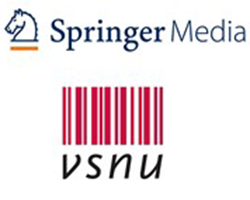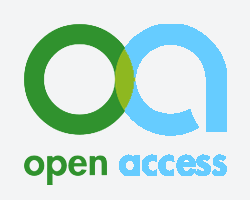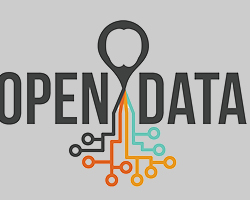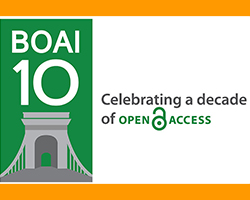
Springer and Dutch universities take key step towards open access
The Springer publishing group and the Dutch universities have reached a negotiation agreement on the transition to open access. Both parties see open access publishing as the road to the future. ‘We’re confident that this agreement with Springer marks a key step in the right direction’, said Koen Becking, president of Tilburg University and chief negotiator for the Association of Universities in the Netherlands (VSNU). ‘It means scientists in the Netherlands will be able to publish in open access format in existing Springer journals, while retaining reading privileges to these journals as well.’
State Secretary Sander Dekker (Education, Culture and Science) has responded enthusiastically to these developments. ‘I’m happy to hear that Springer has taken its responsibility seriously and that the ambitions of both parties on open access have taken hold in the agreement. It is of tremendous importance that major publishing firms such as Springer recognise that open access represents the future of academic publishing. The agreement between the universities and Springer is therefore an important step in the right direction. Sharing knowledge, a fundamental aspect of open access, is an important driver of innovation in the Netherlands. It’s clearly advantageous for many professions: doctors have access to medical research, school teachers can use the latest insight from the educational sciences in their classes.’
Negotiations
Agreements on subscription fees are made for all the Dutch universities with the individual scientific journal publishers, as part of the so-called ‘Big Deal’ negotiations. The universities are only prepared to renew the agreements on subscriptions if the publishers take steps towards open access. Several publishers are hesitant to take these steps, given the drastic changes in their revenue model this transition would cause. Yet the negotiations with Springer prove that these steps can be taken.
Open access improves access to science
The Dutch universities and the Dutch government are very much in favour of opening access to academic publications. Open access publications are easier to find, more frequently quoted and reach a larger audience – benefiting not only science, but society and the economy at large. According to targets set by State Secretary Dekker for Education, Culture and Science, five and ten years from now 60% and 100% of all Dutch academic publications, respectively, should be open access publications. A great deal of academic research is funded by public means. The Dutch universities aim to prevent a situation in which users ultimately have to pay twice for consulting open access publications.
source VSNU

Bill and Melinda Gates Foundation Embraced Open Access
Bill and Melinda Gates Foundation makes its open access policy public. According to the policy statement released, the foundation is committed to information sharing and transparency. ‘We believe that published research resulting from our funding should be promptly and broadly disseminated,’reads the statement. The foundation has adopted open access policy that enables unrestricted access and reuse of all peer-reviewed published research- entirely or partially funded by the foundation.
Gates Foundation open access policy will be effective from January 1, 2015. All new research funding agreements will be attached with this condition as of January next year. The publishers will be allowed to impose embargo period which may not last for more than 12 months. However, imposing embargo by publishers will not be acceptable, whatsoever, after January 1, 2017.
The foundation’s open access policy contains the following crucial open access elements:
– Publications Are Discoverable and Accessible Online. Publications will be deposited in a specified repository(s) with proper tagging of metadata.
– Publication Will Be On “Open Access” Terms. All publications shall be published under the Creative Commons Attribution 4.0 Generic License (CC BY 4.0) or an equivalent license.
-Foundation Will Pay Necessary Fees. This includes Article Processing Charges (APCs).
-Publications Will Be Accessible and Open Immediately. All publications shall be available immediately upon their publication (max 12 months embargo period), and without any embargo period (after January 1, 2017).
-Data Underlying Published Research Results Will Be Accessible and Open Immediately. The foundation will require that data underlying the published research results (depositing data set) be immediately accessible and open.

Open Data Divide and Its Effect on Development Policies
We often hear how the world is divided between global north and global south, and ‘have’ and ‘have not’. This division is based on economic parameters. Revolution that comes with ICT besides creating another category of division, it expanded the already existing one. Now we have division between regions/countries and individuals not only based on economic and social matrices but also on the level of access people or countries have to ICT. There are people who are left behind internet revolution. The gap, just like economic one, is widening. This is alarming, indeed.
Now days, any action or activity that enages ICT literally results in bulk of data. We are in the era of ‘big data’ as a result of the web 2.0. Great deal of data, however, is generated by big companies and public institutions.
Big data which makes data seemingly ubiquitous has surprisingly not led to free access to data all the time and for everyone. Millions do not have access to data to use it for business and for social benefits. Access to internet is one of the factors which determine access to data. And lack of access to the Internet is inhibiting access to data.
Public institutions are one of the major actors in the field of data production and dissemination. It is so astonishing to see how slow public institutions’, mostly funded by tax payers’ money, move towards democratizing access to data. There is frequent call for open access to public data. In practice, public institutions are far behind private institutions both in terms of realizing the potential of ‘big data’ and its data democratization process.
Not all countries and inter-governmental institutions are moving at the same pace as far as embracing open data is concerned. Some are moving fast and others are still hesitating to fully embrace it. The EU and the World Bank are one of those institutions which have made significant progress in terms of advancing and supporting open access and open data policies. For instance, the EU made its position clear through launching various policy initiatives and taking practical actions. It launched open data portal and made mandatory open access publshing- this is one of its major policy instruments so as to advance research and innovation. The EU has shown its commitment to open access through its horizon 2020 open access policy. There are indications which show that some national governmnets, even with in the EU, are not keeping up with the pace.
Data is key ingredient for innovation and research. It boosts creative and sustainable economy. When data is trapped behind a pay wall, we are denying individuals, business and research institutions to innovate and create. On the contrary, when we give people and institutions free access to data, beyond saving time and cost for data collection, we are speeding up innovation and research. Moreover, by democratizing data sharing, we are bridging the gulf created between those who produce and consume great deal of it and those who are left behind in both aspects- producing and consuming very little.
In both fronts i.e. data production and consumption, ACP [Africa, the Caribbean and Pacific] countries are the one which lag far behind the rest of the world. This is the case because countries in these regions lack proper ICT infrastructure which is prerequisite for massive data production, consumption and dissemination. Good news is that, the EU is financing ICT infrastructure development projects in these regions. This will help realize digital bridge between the north and the south. Similarly, there are many initiatives by the EU aimed at strengthening ICT polices, data research and making the Internet affordable in Africa. For the time being the sad reality is that the south is trailing the north as far as having access to open data is concerned. But the EU and other similar initiatives, despite current reality, create an atmosphere of optimism in the global south.
For more see Data for Development

Over the last ten years open access movement has rapidly gown and its effect felt in many countries all over the world. The numbers of open access publishers and journals have shown multiple digit growth.
The change open access has witnessed is in many fronts. Institutions and policy makers embraced open access. Researchers have started both to publish on open access and to use research finding published on open access journals for their own research. Many research funding agencies made funding available for open access publishing; in some cases they even demanded mandatory open access publishing.Not only the numbers of open access journals which grew over time, but also the impact and contribution those journals made in the scientific field.
Open access have scored success in many fronts. However, there are some key moments, above all others, which helped the shape of open access movement and industry take current shape. These points indeed helped open access movement gather momentum and gain significant ground in the scientific community. Rhodri Jackson identified five points which played key role in terms of determining success of open access movement over the past ten years. These are:
1. 2004/05 – Nucleic Acids Research (NAR) converts to OA
2. 2008 – National Institutes of Health (NIH) Mandate Introduced
3. 2008 – Springer buys BioMed Central (BMC)
4. 2007 on – Growth of PLOS ONE
5. 2012 – The ‘Finch’ Report
To read more go to Oxford University Press

Open Access and Challenges Holding Back its Success
Open access has been around now for more than a decade. Open access leaders, scholars, scientific journal publishers and analysts believed that the emergence of open access would pose a serious threat to the very existence of traditional journal publishers. Many in the field of academic research anticipated that open access journals would break into the top tier scientific journals and fill the gap that might be left behind by some journals. On the contrary, Bernestein Research declares , ‘11 years after the Berlin Declaration on Open Access, however, the rise of Open Access appears to inflict little or no damage on the leading subscription publishers.’
Why subscription journals such as Elsevier and Springer are still growing and they are making hefty profit ( their profit margin is usually bigger than that of oil companies)? Why open access journals have failed to get significant ground in the scientific publishing world by pushing aside traditional publishers which charge a high price for their articles? There are some explanations for this.
Subscription based publishers managed to keep threat that has come to existence with the emergence of open access journals at bay using various techniques. They have, to begin with, adopted hybrid model of publishing. Creation of hybrid journals helped big publishers in two ways. Firstly, they earn profit through APC (articles processing charges). There are speculations that those publishers may be ‘double dipping’ i.e. charging APC and subscription fees on the same article. Secondly, it helped their image. By embracing hybrid publishing model subscription dependent journals appear to be open access friendly. These ways they claim to be compliant with national and the EU open access policies. Those policies require researchers to make tax payers funded research to be freely accessible to general public; mostly after max embargo period of one year.
Lack of clarity in defining core goal of open access is another problem dragging the progress of open access,according to Bernestein Research. Open access definition and objective widely differ depending on whether you discuss issues related to open access with a librarian, an economist or an activist. To achieve big, irrespective of background and career, the goal open access aspires to achieve should be one and the same.
Countries have different policies and priorities as far as open access are concerned. This is another area of challenge. For instance, the commitment to open access that the US government shows is not as strong as the Europeans commitment. Policy of the EU and many European countries encourages gold open access through APC funding. Whereas Green open access with embargo period appears to be good enough for Americans. They seem not to worry about embracing Gold route at least for the time being.
Another challenge, which is systematic in nature, is issue of tenure and career security. Publishing on high impact factor journals such as Nature and Science comes with high reward as far as securing early career and grant are concerned. Having one of those journals name in your resume when you apply for a job can make a lot of difference. Prestige and reward plays a significant role in academic circle. It’s a hard fact. That’s why researchers work so hard to put their name on those journals despite having many open access journals around them.
Until research centers, grant providers and universities start different approach of looking at how to recruit, promote and reward, subscription based journals will grow at the expense of open access ones. There is a hope that those institutions will change their current approach. But this takes bold and brave leadership. It can be done. It will take time, though.

